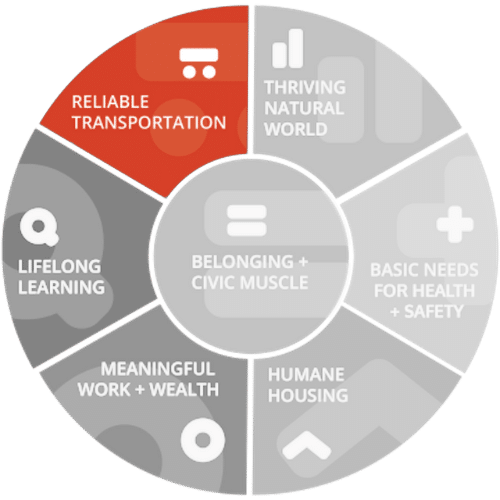The Vital Condition of Reliable Transportation
Reliable Transportation is one of seven interrelated “vital conditions” that comprise the Vital Conditions for Community Health and Well-being Framework.
Designing compact, accessible communities makes it easy and safe for people to walk, bike, roll, or use buses and trains. Everyone moves between home, work, school, stores—and more —in daily life. Reliable, sustainable transportation systems ensure people are able to get where they need to go.
Transportation options influence access to jobs, social mobility, and our health. Active transportation—walking, biking, and transit use—helps us incorporate physical activity into our daily lives.
- Close to work, school, food, and leisure
- Safe transport
- Active transport
- Efficient energy use
- Few environmental hazards

Measuring Reliable Transportation in the Inland Empire
The following data visualization allows you to explore Reliable Transportation in our region. These community conditions represent a starting point for our shared understanding. It is essential to pair the numbers with local knowledge and experience for a more complete picture.
To begin, select your area from the drop-down menu below. The measures have both state and national benchmarks. You can toggle between the national and state data by using the benchmark button below. The scores on the right offer a quick gauge of how that community indicator is doing relative to the benchmark. A red score indicates that the measure is performing worse than the selected benchmark. A grey score indicates that the measure is similar to the benchmark. A green score indicates the measure is performing better than the benchmark.
